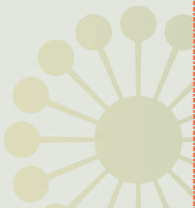ART IN EDUCATION The young teacher begged off her grandmother's garden party by saying, "I have to teach class that day." The old dowager responded, "One does not teach class. Either one has it or one doesn't." That old chestnut might also be said of art. One does not teach art; one evokes it. An environment is created in which art is encouraged, in which creativity is nurtured, in which new perspectives and insights are stimulated. Certainly there is instruction in the use of media, the training of motor skills, and the acquisition of knowledge and technique, but art transcends our ability to define it and to communicate it. Learning and thinking are incremental by infinite replication and modification of acquired images, concepts, symbols, etc. Sometimes there are new insights that come from visions, from an archetypal consciousness, a primordial memory which we interpret in the light of our stories, experiences, and present reality. But for the most part, one thought is a stepping stone to another in the stream of consciousness. Creative art derives from both the preconscious well—the attempt to escape the stream of consciousness—and the ability to take an idea, a concept, and extend it through a series of permutations to make a new thing. Art is not only a perspective on reality; it is a way of thinking. Art is a means of giving expression to a thought in such a way that it leads to a new discovery of truth and beauty, of wonder and creativity. May is "Arts in Education" month. It is unfortunate that too many school boards, as well as members of congress, have come to regard art as a nonessential ingredient in the curriculum, a dispensable luxury that must be trimmed from overburdened budgets. This myopic perspective sees art as mere decoration or entertainment when in reality art should be seen as a necessary ingredient to cognitive development. It is unfortunate that we have learned too much educational theory from the Wizard of Oz who, since he cannot give out brains, gives out diplomas. Our schools should spend more time on teaching children how to think than what to think. We applaud the work that is being done in the art and music departments of school districts throughout the county where children are encouraged to stretch beyond the forms and norms of so-called standard curricula. Not only do we encourage school districts to recognize the visual and performing arts as a necessary part of human culture and experience, but to provide for the artistic stimulation of students by fostering a climate of acceptance of the creative process. Whether you are a teacher, a student, or personally engaged in some form of human development, here are some suggestions to enhance the creative process. 1. Encourage play. Creativity often comes when we are not consciously thinking about solutions to problems. 2. Accept mistakes. We learn when we fail (we learn what doesn't
work). Fear of failure stifles creativity. 4. Learn to accept ambiguity. By accepting the uncertainty principle you avoid frustration, which is a barrier to the creative process. Besides, life is dull when you know all the answers. 5. Encourage fantasy. Too much reality can drive us crazy. There is a place for daydreams. 6. Unless you are a Vulcan, it's OK to be illogical. Try to emulate the Queen of Hearts and believe in at least six impossible things before breakfast. 7. Don't fear the unknown. Growth takes place on the edges, whether it is the fringes of society or the frontiers of the mind. 8. Laugh at yourself. Like the angels, you can only soar when you take yourself lightly. Dr. Harry L. Serio |
|
